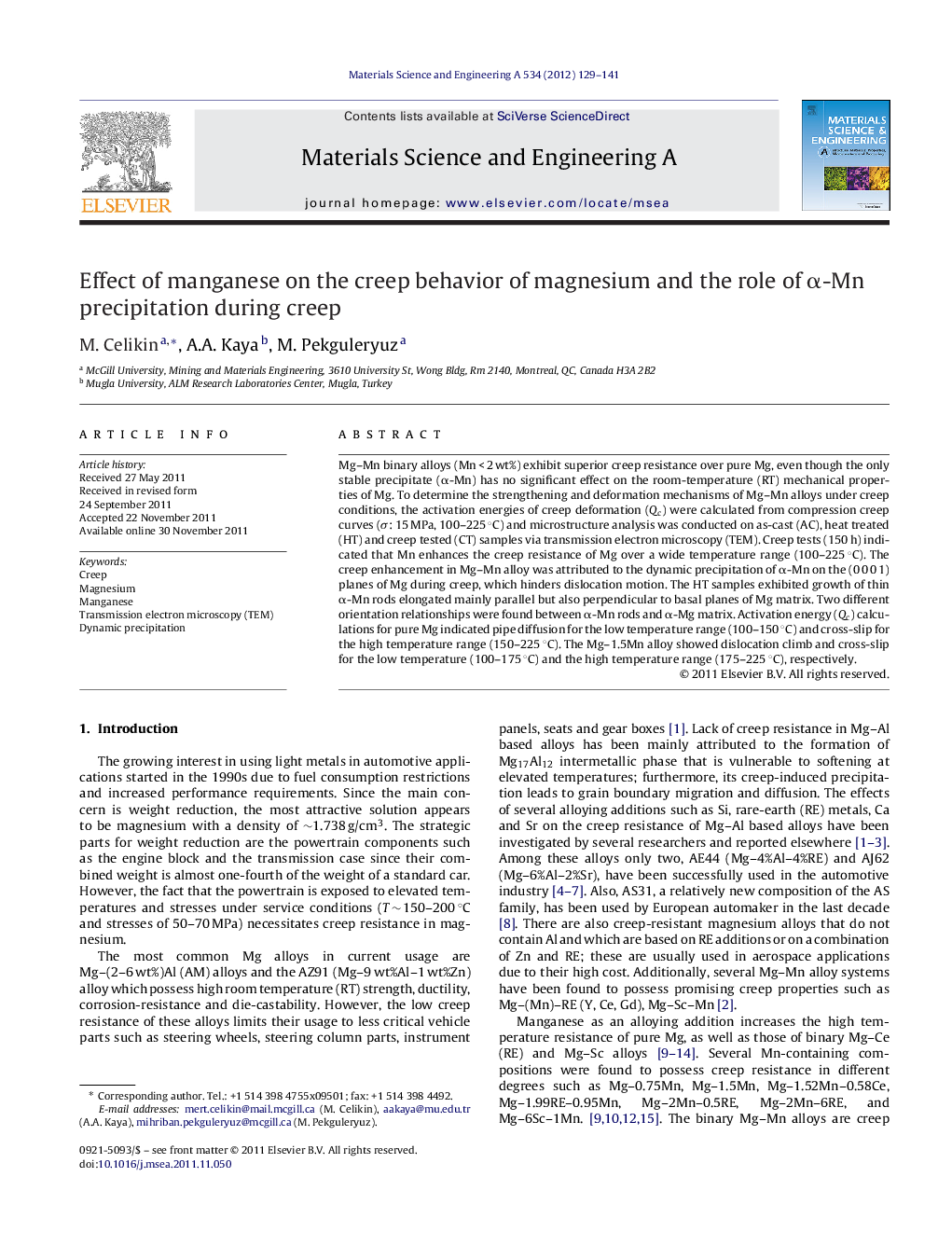| Article ID | Journal | Published Year | Pages | File Type |
|---|---|---|---|---|
| 1577556 | Materials Science and Engineering: A | 2012 | 13 Pages |
Mg–Mn binary alloys (Mn < 2 wt%) exhibit superior creep resistance over pure Mg, even though the only stable precipitate (α-Mn) has no significant effect on the room-temperature (RT) mechanical properties of Mg. To determine the strengthening and deformation mechanisms of Mg–Mn alloys under creep conditions, the activation energies of creep deformation (Qc) were calculated from compression creep curves (σ: 15 MPa, 100–225 °C) and microstructure analysis was conducted on as-cast (AC), heat treated (HT) and creep tested (CT) samples via transmission electron microscopy (TEM). Creep tests (150 h) indicated that Mn enhances the creep resistance of Mg over a wide temperature range (100–225 °C). The creep enhancement in Mg–Mn alloy was attributed to the dynamic precipitation of α-Mn on the (0 0 0 1) planes of Mg during creep, which hinders dislocation motion. The HT samples exhibited growth of thin α-Mn rods elongated mainly parallel but also perpendicular to basal planes of Mg matrix. Two different orientation relationships were found between α-Mn rods and α-Mg matrix. Activation energy (Qc) calculations for pure Mg indicated pipe diffusion for the low temperature range (100–150 °C) and cross-slip for the high temperature range (150–225 °C). The Mg–1.5Mn alloy showed dislocation climb and cross-slip for the low temperature (100–175 °C) and the high temperature range (175–225 °C), respectively.
► Creep enhancement in Mg–Mn alloy was attributed to dynamic precipitation of α-Mn on (0 0 0 1)Mg during creep. ► Two different orientation relationships were found between α-Mn rods and α-Mg matrix. ► Activation energies of creep were determined and verified with in-depth TEM analysis.
